Body Armor 101
Glossary
Areal Density - all armor manufacturer's list the theoretical weight, or areal density (A.D.), of their armor to show the weight of the armor as worn by an officer. This is always expressed as “pounds per square foot,” or “psf.” It is not a physical weight of the vest but a sales tool to demonstrate how much the ballistic systems weighs over a certain area. A vest with a lower A.D. will be thinner and more expensive, while vests with a higher A.D. will be a little thicker and cheaper. However, the protection level is the same.
Backface signature – Obviously, a vest must stop a bullet from going through into your body. But a vest must also provide protection from blunt trauma, or what is called Backface signature (BFS). When we test our body armor, we strap the vest onto a box filled with a certain type of clay which reacts like the human body. The clay is malleable and holds the indentation of the impact behind the vest after being impacted. We measure this indentation to ensure the BFS is less than 44mm (1.73"). The Army set 44mm as the difference between a BFS that causes minor injuries versus a BFS above 44mm which is more likely to cause a catastrophic injury, even though the bullet stopped in the vest.
Ballistic materials – there are different types of high-performing ballistic materials we use in our armor. We utilize woven aramid (i.e., Dupont Kevlar) to better entangle bullets and stop them sooner in the armor. We utilize unidirectional materials (i.e., Honeywell Shield) to provide more strength and backface signature protection to our armor designs. There are several other types of proprietary ballistic materials we use to make White Horse armor stronger and lighter than our competitors...but that's a secret!
Bullet – the fast-moving projectile fired from a handgun or rifle. This is where the phrase 'bullet resistant vest' comes into play. Bullets obviously come in many different calibers and sizes with different capabilities for distance, stopping power and purpose.
Bullet expansion – this is how a bullet expands when it strikes a hard surface. Most bullets are made of lead with a copper jacket. Before firing, bullets are conical in shape; after striking a surface, bullets look more like a mushroom. Bullet expansion relates to stopping power. The more a bullet expands, the more damage it can cause to the human body. So, bullet expansion has a big effect on how the materials in body armor stop bullets. A bullet that expands quickly on impact is typically an easier bullet for a vest to stop.
Concealable vest – a vest worn under a uniform shirt, typically by a patrol officer. Concealable vests are rated to offer protection against handgun threats.
CPL – Certified Products List. This is the list of approved vests certified by NIJ to be sold in the US. The models of hard and soft armor listed have successfully passed the NIJ 0101.06 ballistic certification.
Hard armor – This is generally a rigid rifle plate used to defeat high-velocity rifle threats such as .308 and 5.56mm. Some hard armor plates will even stop armor-piercing rounds. Rifle bullets are moving so fast that a vest cannot stop the bullet alone. White Horse wants you to be aware of this important distinction between soft armor and hard armor. White Horse designs hard armor using heat and pressure to consolidate the ballistic materials and create a rigid armor to defeat rifle threats.
Independent Lab - a vest must be tested and certified at an independent ballistic lab to the NIJ 0101.06 body armor standard to be listed on the CPL and sold in the US. NTS Chesapeake is in MD; NTS Wichita is in KS; OBL is in OR.
NIJ 0101.06 - This is the prevailing ballistic standard White Horse certifies all our products to. The National Institute of Justice (NIJ) is the administrative body responsible for regulating the standard. '06 'was released in 2008 and encompasses backface signature testing, V50 testing and a 10-day tumble test to make sure our vests work in all conditions. Approximately 400 test shots are fired at 56 different test panels to ensure ballistic integrity. NIJ06 has three handgun threat levels and two rifle threat levels.
Soft armor –This is generally a flexible vest worn close to the body by a police officer. Soft armor is rated to stop handgun threats such as 44mag and .357mag. White Horse designs and tests our soft armor solutions in our in-house ballistic Innovation Lab to the same standards used by NIJ and the independent labs. This ensures our soft armor designs are beyond safe.
Threat level – This is how NIJ designates levels of protection for soft and hard armor. Picking the correct threat level of armor is essential for safety and depends on officer needs.
Special threats - these are typically handgun bullets outside of the NIJ threat level classification but are still considered pertinent threats by certain law enforcement agencies. These special threats are often higher velocity handgun rounds, hollow points, or exotic steel-jacketed bullets.
- Winchester 9mm Ranger SXT 127gr +P
- FN/Hornady 5.7mm SS192 28gr JHP
- Wolf 9mm Luger 115gr FMJ Steel
- Speer .40cal S& W 180gr GDHP
V50 - This is an important term used often in the armor industry. V50 is the velocity at which a certain projectile will completely penetrate a certain piece of armor 50% of the time. This is an indication of the relative strength of the armor and how reliable the armor's performance will be. As an example, level IIIA armor offers protection against the 44mag bullet at 1430ft/sec. Our expected V50 for IIlA armor would be at least 1630ft/sec with the 44mag bullet, approximately 200ft/sec over the required velocity.


